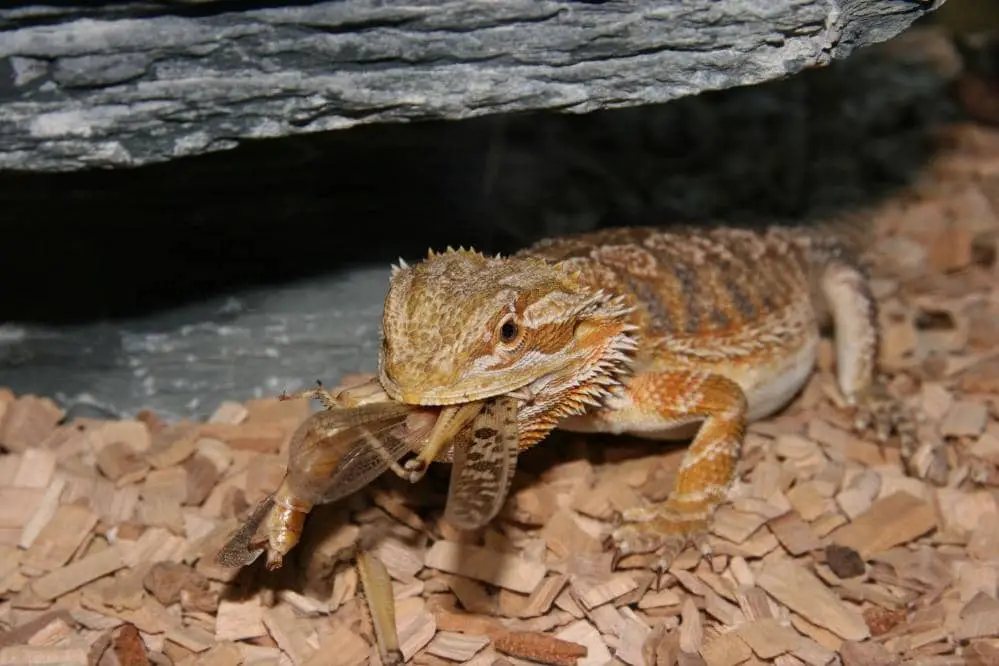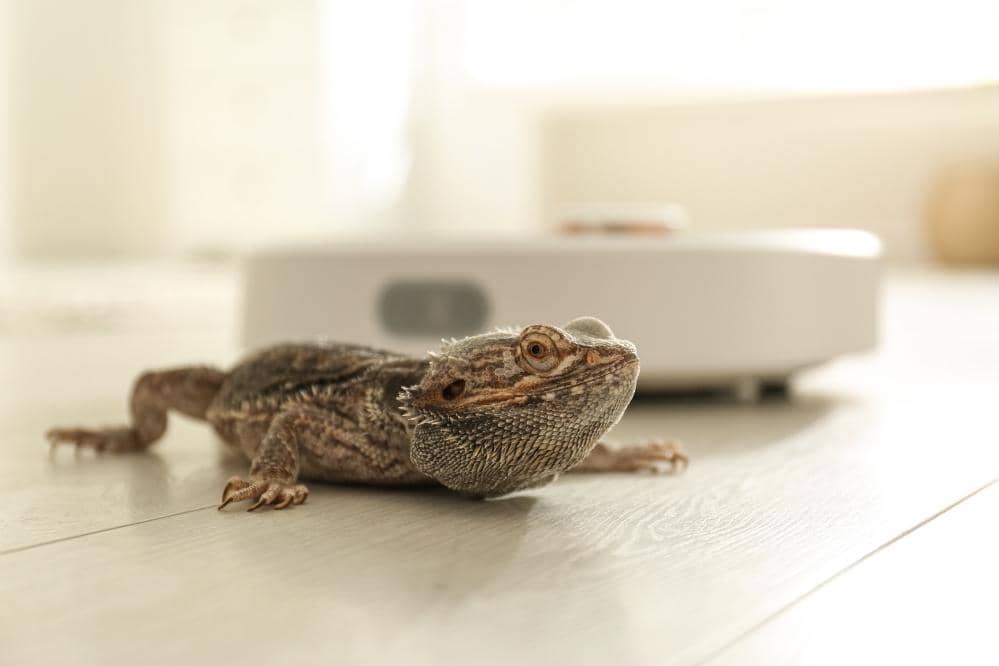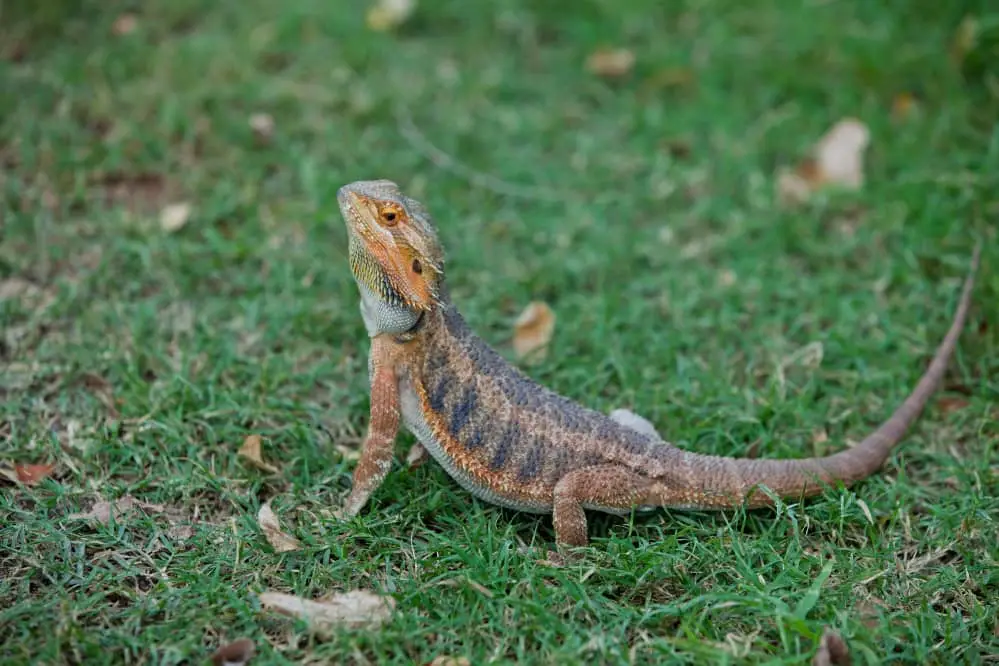Running on two legs is something that we don’t expect from bearded dragons. In fact, many seasoned beardie owners don’t know that their bearded reptile has the ability to run on two legs. This could be because beardies generally don’t exhibit this behavior in captivity often. So if you ever see your bearded dragon running, don’t be surprised at all.
Yes, one of the most fascinating aspects of beardies ownership is seeing them running on two hind legs. In fact, in wild conditions, bearded dragons have been observed to run quite fast, even if they can jump over the hurdles when they feel threatened. You must be wondering after reading all this, and many questions may be erupting in your mind.
Continue reading to learn about the situations in which
- bearded Dragon generally runs on two legs
- how fast a bearded dragon can run on two legs
- whether I should allow my beardie to run around the house
- whether running on two legs is good for beardies
and much more!
How Fast A Bearded Dragon Can Run On Two Legs (Hind Legs)
You may feel astonished, but it’s true that bearded dragons can run at a speed of nine to ten miles per hour (or 14 – 16 km per hour). However, some bearded dragons are also known to run at a speed of 12 miles per hour (or 20 km per hour). This is incredibly fast for such a small reptile, and it’s crucial to their survival in the wild. Furthermore, these figures are much more than the average running speed of a common human being. So if you see a beardie running, let it go instead of attempting to catch it.
Contributing Factors
Naturally, everyone tries to run away when he feels threatened or scared of something, but the speed at which bearded dragons can run is really impressive, despite their small size. There are three main contributing factors that help a bearded dragon to astonish us with its running ability.
First, the long tail of bearded dragons enables them to maintain their balance when they are in an upright position while running.
Second, bearded dragon’s hind legs are robust and muscular enough to bear the whole body’s weight and play a key role in sprinting them forward swiftly.
Third, is their small size and lighter weight, further boosting their ability to run fast.
What Makes A bearded Dragon Run On Hind Legs
Initially, it was believed that bearded dragons intentionally run on two legs when they want to move really quickly (to avoid predators or any other reason). However, a lot of research has been done on this topic during the last decade, and it has been found that this happens due to an evolutionary fault. This happens during the process of evolution when different species of reptiles, including bearded dragons, gain the ability to shift their weight on hind legs, which enables them to move and change their direction more swiftly.
So actually, when beardies try to run fast, their center of gravity changes its place in their body, thus forcing their bodies to the upright position. So we can conclude that beardies don’t run on two legs at will; in fact, the laws of physics force them to shift to two legs while running fast.
Reasons: Why Bearded Dragons Have To Run On Two Legs
These are the main three reasons why bearded dragons run on two legs.
To Evade Predators
Since bearded dragons are small, they are the target prey for many larger animals and birds in the wild. So they often find themselves in a situation where a predator is ready to attack them, and they have to act really fast for their lives. Under such circumstances, their ability to run fast helps them reach and hide at a safe place well before time.
To Hunt A Prey

Most of us are familiar with the fact that bearded dragons are omnivores by nature and can thrive on both plant and animal source diets. Generally, bearded dragon prefers to eat slow moving insects and greens because they want to save their energy to escape predators. However, they can also eat other lizards if they are too hungry and have no other food options. So they may have to run to hunt a lizard or fast moving or jumping insects (like crickets).
Related article Do bearded dragons prefer live food?
To Shift To A Better Place
With the passage of time, bearded dragons have developed an excellent instinct to sense environmental changes, and if they need to find a new spot to live or hide, they can sprint to find a better place. Common environmental changes that can force a beardie to find a new location are incoming rain, dust storms, high winds, sunset, and too high or low temperatures.
Should I Allow My Beardie To Run Around The House?
Running behavior is generally not observed in bearded dragons in captivity because, in a closed vivarium, enough space is not available to run. In addition, in captivity, beardies usually don’t have to struggle for food, and no predators are there that they need to escape. Nevertheless, so many beardie owners wish to see their bearded friend running and want to let their beardie free to go around in the house. But the question is should they do that or not?

Reptile experts recommend that you should take your bearded friend out of its cage for 20-30 minutes twice a week. It’s good for the physical and mental stimulation of your beardie and to develop a bond. However, since beardies are sensitive to environmental temperature and can easily conceal themselves under furniture, inside a closet, or in small holes (due to their small sizes), so it will be hard to find them, and they may get lost. Therefore you must take the following precautions to ensure the safety of your bearded reptile.
- Don’t allow your bearded friend to roam throughout the house; instead, select a large room or hall and close all the windows and doors so that he may not escape outside.
- Select a sunny day to take your beardie out, or make arrangements to maintain the appropriate room temperature to avoid heat issues.
- Remove all the furniture, other pets (animals or birds), portraits or statues, and pets from the room.
- There must be nothing that a bearded dragon can mistake for food or small enough that a beardie can eat.
- There must be no unnecessary noises, and lighting should be enough, without any fluctuation.
- Keep your reptile engaged with you all the time, and don’t leave him alone even for a second.
Conclusion
Our bearded friends can run pretty fast (at a speed of 9-10 miles per hour) on their hind legs. Though we may not see them running in captivity, their ability to run on two legs is crucial for their survival in the wild. Because in the wild, they have to move swiftly to avoid predators, catch the prey or shift to a better place. You can allow your bearded reptile to move around (and run if they want to) in a big closed room or hall; however, make sure to follow the instruction mentioned above; otherwise, you may harm your beardie or even may never be found again.

